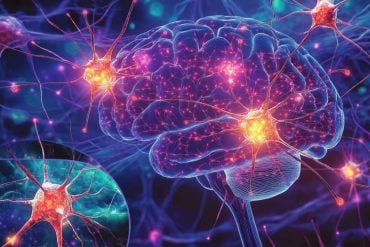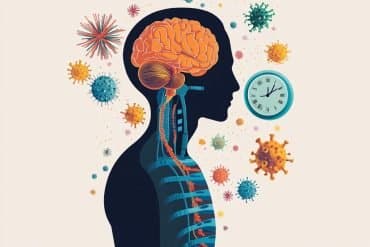Summary: Researchers made a significant breakthrough in understanding neurodevelopmental disorders by identifying how three novel genes contribute to these conditions.
The study utilized genomic sequencing, phenotyping, and modeling in fly and stem cells to investigate the genetic architecture of these genes. They discovered that malfunctions in the spliceosome, a protein complex responsible for gene splicing, are a key factor in these disorders.
This research paves the way for potential therapeutic targets, as it provides a deeper understanding of the roles these genes play in brain development and their malfunction in neurodevelopmental disorders such as developmental delay, intellectual disability, and autism.
Key Facts:
- The CHOP study identified three genes whose variants impact the spliceosome, leading to neurodevelopmental disorders.
- Researchers used human stem cell and fly models to map the effects of these gene variants.
- This study is significant for understanding the genetic mechanisms of neurodevelopmental disorders and could aid in developing targeted therapies.
Source: CHOP
An international study group led by researchers of Children’s Hospital of Philadelphia (CHOP) have identified how three novel genes cause neurodevelopmental disorders. Researchers now have a better sense of the genes’ roles in human brain development and function and their ability to serve as potential therapeutic targets in the future.
The findings were recently published online by the Journal of Clinical Investigation.

Over the last couple of decades, researchers have identified more than 1500 genes in different signaling pathways associated with neurodevelopmental disorders. On average, about one third of patients with neurodevelopmental disorders receive a genetic diagnosis.
However, little is known about how these genes are networked and how their malfunction leads to these disorders.
Prior research in other disorders has shown that issues related to gene splicing may be to blame. Before being turned into proteins, genes are transcribed into introns, or strands of RNA that do not code for proteins, and exons that code for proteins. Introns are removed in a process called splicing, which is carried out by a protein complex called the spliceosome.
Variants impacting the spliceosome have rarely been implicated with neurodevelopmental disorders. However, through a series of complex testing, researchers in this study showed that malfunctions in the spliceosome are responsible for some neurodevelopmental disorders.
“Using multiple techniques, including phenotyping, genomic sequencing and modeling in fly and stem cells, we were able to map the genetic architecture of three genes associated with neurodevelopmental disorders, particularly developmental delay, intellectual disability and autism,” said Dong Li, Ph.D., a research faculty member in the Center for Applied Genomics and the Division of Human Genetics at CHOP and lead author on the study.
“Combining fly and human genetics helped us understand the mechanisms of how variants of these genes affect the machinery of the spliceosome and cause these disorders.”
In this study, researchers utilized genomic and clinical data from unrelated patients with neurodevelopmental disorders. Among the cohort, 46 patients had missense variants of the gene U2AF2 and six patients had variants of the gene PRPF19. In human stem cell and fly models, the researchers noticed issues with the formation of neurites, or protrusions on neurons that give them their shape, as well as issues with splicing and social deficits in the fly models.
Deeper profiling revealed that at third gene, RBFOX1, had missense variants that affected splicing and loss of proper neuron function. These findings were later compared with those of patients in the study, which confirmed that variants in the three genes can lead to neurodevelopmental disorders.
“We used fruit flies to study the effects of losing the function of these three genes one at a time and found that two genes independently led to brain structural and functional abnormalities, highlighting the essentiality of these genes in development,” said study co-author Yuanquan Song, Ph.D., an associate professor from the Department of Pathology & Laboratory Medicine at CHOP.
“Apart from identifying patients with such variants in these genes for the first time, our extended translational modeling study efforts aimed to determine the underlying functions for these variants further elucidated their clinical relevance.”
“Not only does this study identify three causative genes associated with neurodevelopmental disorders, but it helps us understand how critical pre-mRNA splicing is to the development of the central nervous system,” said senior study author Hakon Hakonarson, M.D., Ph.D., director of the Center for Applied Genomics at CHOP.
Funding: This study was supported by the CHOP Roberts Collaborative Functional Genomics Rapid grant and Institutional Development Funds, an Eagles Autism Foundation grant, National Institutes of Health (NIH) grant R01NS107392, Pennsylvania Department of Health grant 4100088540, the NIH Common Fund through the Office of Strategic Coordination/Office of the NIH Director under Award U01HG007672, the National Human Genome Research Institute grant with co-funding from the National Institute on Minority Health and Health Disparities and the National Cancer Institute, the state of Alabam, the Telethon Undiagnosed Diseases Program grant GSP15001, NIH U01 award HG009610, grants NU22-07-00165 from the Czech Ministry of Health, the German Research Foundation under Germany’s Excellence Strategy (EXC 2067/1-390729940) and the DZHK (German Centre for Cardiovascular Research; partner site Göttingen), the Dutch Organization for Health Research and Development: ZON-MW grant 912-12-109, the Novo Nordisk Foundation grant NNF20SA0064340, the Japan Agency for Medical Research and Development under grant numbers JP22ek0109486, JP22ek0109549, and JP22ek0109493; JSPS KAKENHI under grant number JP21K15907, and the Takeda Science Foundation.
About this genetics and neurodevelopment research news
Author: Ben Leach
Source: CHOP
Contact: Ben Leach – CHOP
Image: The image is credited to Neuroscience News
Original Research: Open access.
“Spliceosome malfunction causes neurodevelopmental disorders with overlapping features” by Dong Li et al. Journal of Clinical Investigation
Abstract
Spliceosome malfunction causes neurodevelopmental disorders with overlapping features
Pre-mRNA splicing is a highly coordinated process. While its dysregulation has been linked to neurological deficits, our understanding of the underlying molecular and cellular mechanisms remains limited.
We implicated pathogenic variants in U2AF2 and PRPF19, encoding spliceosome subunits in neurodevelopmental disorders (NDDs), by identifying 46 unrelated individuals with 23 de novo U2AF2 missense variants (including seven recurrent variants in 30 individuals) and six individuals with de novo PRPF19 variants.
Eight U2AF2 variants dysregulated splicing of a model substrate. Neuritogenesis was reduced in human neurons differentiated from human pluripotent stem cells carrying two U2AF2 hyper-recurrent variants.
Neural loss of function of the Drosophila orthologs, U2af50 and Prp19, led to lethality, abnormal mushroom body (MB) patterning, and social deficits, differentially rescued by wild-type and mutant U2AF2 or PRPF19.
Transcriptome profiling revealed splicing substrates or effectors (including Rbfox1, a third splicing factor), which rescued MB defects in U2af50 deficient flies.
Upon re-analysis of negative clinical exomes followed by data sharing, we further identified six NDD patients carrying RBFOX1 missense variants which, by in vitro testing, showed loss of function.
Our study implicates three splicing factors as NDD causative genes and establishes a genetic network with hierarchy underlying human brain development and function.






